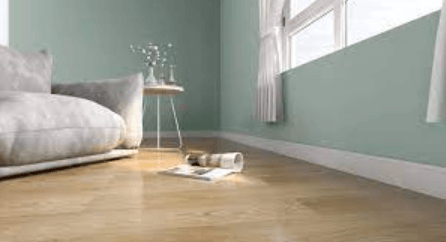Skirting Boards: The Unseen Heroes of Interior Design

In the intricate tapestry of interior design, every element plays a role in creating a harmonious and visually appealing space. While some features steal the spotlight, others quietly contribute to the overall aesthetic and functionality. Enter skirting boards, the often-unnoticed heroes that line the base of walls, framing a room with subtle elegance and practicality. In this exploration, we unveil the significance of Skirting Boards, from their historical roots to their diverse styles and the indispensable role they play in interior design.
Historical Roots:
Skirting boards have a rich history that can be traced back to ancient civilizations where the practical need for protection and decoration led to the inception of this essential design element. In medieval times, the lower portions of walls were often subjected to wear and tear, prompting the use of wooden panels or baseboards to shield them. Over the centuries, skirting boards evolved into both a functional and decorative feature, showcasing intricate carvings and ornate designs during periods of architectural opulence.
Functionality Beyond Aesthetics:
While skirting boards undoubtedly contribute to the visual appeal of a room, their functional role is equally crucial. These boards act as a protective barrier, preventing furniture, vacuum cleaners, and daily foot traffic from causing damage to the lower portions of walls. In essence, skirting boards serve as a buffer, shielding the walls from scuffs, scratches, and dents that can diminish the overall appearance of a well-designed space. Beyond protection, skirting conceals the joints between walls and flooring, providing a polished finish that elevates the entire room.
Diverse Styles for Every Design Palette:
Skirting boards are available in a myriad of styles, ensuring that they can seamlessly integrate into any design aesthetic. The classic, straightforward profile is a timeless choice that complements various interior styles, from traditional to contemporary. For those seeking a touch of grandeur, ornate skirting boards with intricate patterns and curves add a sense of opulence to the room. Modern design trends often favor sleek and minimalistic skirting with clean lines, contributing to a streamlined and uncluttered look.
Materials: A Key Consideration:
The choice of material for skirting boards greatly influences both their appearance and functionality. Wood remains a popular choice for its natural warmth and the ability to be stained or painted in a range of colors. MDF (Medium Density Fiberboard) provides a smooth and consistent surface, ideal for achieving a contemporary and uniform look. PVC and other synthetic materials offer durability and resistance to moisture, making them suitable for spaces exposed to humidity, such as bathrooms and kitchens. The choice of material allows homeowners and designers to tailor skirting boards to the specific needs and style preferences of each space.
Color and Finishes:
Skirting boards offer an opportunity to play with color and finishes, adding depth and contrast to a room. Matching the skirting color with the walls creates a cohesive and integrated appearance, while opting for a contrasting color can make a bold design statement. Additionally, experimenting with different finishes, such as glossy or matte surfaces, allows for further customization, emphasizing the skirting as a finishing touch that completes the overall design.
Read also: Mastering Grader Blades: Essential Tips for Optimal Performance
Invisible Innovation:
In the realm of interior design, innovation is ever-present, even in seemingly traditional elements like skirting boards. Modern solutions include skirting boards with built-in features like cable management, providing a discreet and organized way to conceal wiring for electronic devices. Smart skirting options with integrated lighting or sensor technology are also gaining popularity, seamlessly combining form and function in an unassuming element.
Conclusion:
Skirting boards, often overlooked in the grandeur of interior design, stand as the unsung heroes that quietly contribute to the beauty and functionality of a space. From their historical roots as protective barriers to their diverse styles that suit any design palette, skirting boards play an indispensable role in framing a room with elegance and purpose. As the world of interior design continues to evolve, skirting boards remain a timeless and versatile element, proving that even the most subtle details can be the unsung heroes of a well-designed space.



